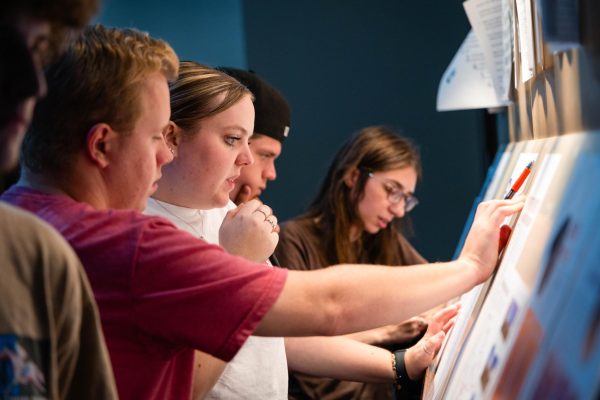Murky language muddles Michigan admissions case
April 8, 2003
I’ve said it before, and I’ll say it again.
Whoever came up with that childhood gem, “Sticks and stones may break my bones, but words will never hurt me” is officially my hero.
Not because I think that little idiom impresses upon me some great jewel of knowledge that has been in my psyche as I begin my adult life.
It doesn’t. We all realize as we get older that words do in fact hurt sometimes.
But in that tiny marble bag and clever collection of syllables lies one truly emphatic truth that we should all note, even today.
And it is this: When it comes to using words, it is all about how you phrase things – especially in the highest court in the land.
When our Supreme Court agreed to hear two cases dealing with the rejection of two law school applicants at the University of Michigan, it was immediately hyped as the biggest such case since the landmark Bakke case of 1978.
Leading up to the case’s first of several big days in front of the Supreme Court last Tuesday, the battle lines were drawn. And they were as plain as Geraldo Rivera giving away Coalition troop positions in Iraq.
Proponents of affirmative action see the Michigan case as chance to further cement what a fractured Supreme Court said in 1978: Quotas and two-track admissions systems were unconstitutional, but using race as one of many “plus” factors in admissions was OK.
The Michigan plaintiffs hoped for a new decision that would bar all use of race. And nearly everyone hoped the court would clarify the murky standard set by Bakke. But last week’s arguments revealed another split court.
I’m willing to bet that it has something to do with language.
Check it out.
Those who defended the university said they did so because, since the state has a “compelling interest” in diversity, race could be used as a factor in admissions.
According to Newsweek, opponents of affirmative action thought they’d found a solid test case in Michigan because its undergraduate program uses a point system to sort through 24,000 applications a year. It then gives minority groups an extra 20 points out of 150 and does the same for athletes and the economically disadvantaged.
The graduate law school doesn’t use a point system, but instead it aims for a “critical mass” of minority students.
The “critical mass” justification drew scorn by some justices and plaintiff’s attorneys who said such a term wreaked of a quota standard.
But in my mind, when each side is banking the entire basis of their cases on such ambiguous language as “compelling interest” and “critical mass,” they’re both missing the larger picture.
Among the many misconceptions about affirmative action is the belief that it allows unqualified minorities to get into college solely on their race. That just isn’t true. Affirmative action forces universities to admit qualified minorities.
But whatever side of the fence you are on in relation to the affirmative action monster is really irrelevant.
We can all probably agree that the system at the least needs to be clarified or tinkered. But it won’t get fixed with shoddy arguments or unclear language.
Otherwise, we are just talking about sticks and stones. And like that fable, eventually all thin truths are broken.
Kyle Hightower is a junior print journalism major from Paducah.
The opinions expressed in this commentary are only those of the writer and not of the Herald or Western Kentucky University.
























